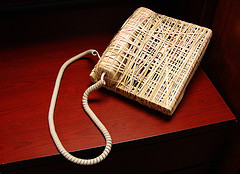Majority Of U.S. Households Either Don’t Have Or Don’t Use Landline Phones
According to data released by the Centers for Disease Control (we’ll explain that later), the majority of U.S. households either don’t have a landline or simply don’t use it.
The CDC estimates that more than a third (35.8%) of households are completely without landlines. Then there are the 15.9% of households that apparently use their still-connected landline as a paperweight or a reminder of days gone by. Combined, that means that 51.7% of households are effectively wireless-only. The 1.8% increase from last year pushed this group into the majority for the first time.
Right now, the sweet spot for wireless-only households is the 25-29 age group. Among these people, 60.1% live in households without landlines. It might surprise some to see that only 49.5% of those in the 18-24 age group are living sans landlines, but you have to remember that some of these people are still living with their parents. So when you see that only 25.8% of people between 45 and 64 are wireless only — and a tiny 10.5% for those aged 65 and over — it makes a bit more sense why younger adults might still be living in houses with landline phones.
That notion is supported by the stat showing that a whopping 75% of adults living with non-related adult roommates are wireless only. So once young adults leave home, an overwhelming majority of them are choosing to just have a cellphone in their house. Renters are also more than twice as likely as homeowners to be wireless-only (58.2% compared to 23.2%, respectively).
Now, as to why the CDC does research on the topic of wireless and landline telephone use. It’s not because they are concerned about germs being passed via shared headsets. It’s about the reliability of phone surveys, which until very recently were only done with consumers who had landlines.
The CDC does regular surveys via phone and it — along with all other companies that hope to provide statistically accurate surveys — needs to know that its results aren’t biased by calling too many landline or wireless customers.
For instance, the CDC points out that if you did a survey asking adults if they have had five or more alcoholic drinks in a single day during the past year, you’d get remarkably different numbers if you polled only landline users (17.5% of whom would respond in the affirmative) or only wireless users (30.5% of whom answered yes to the question). Similar disparities were found on the topics of health insurance, health care, exercise, smoking and HIV testing.
[via GigaOm]
Want more consumer news? Visit our parent organization, Consumer Reports, for the latest on scams, recalls, and other consumer issues.


